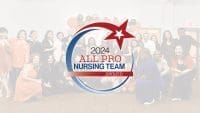Every year, nearly 2 million patients seek care in U.S. emergency departments (EDs) for asthma attacks. That gives the ED staff a great opportunity to teach patients about managing asthma. There’s just one problem—time. In the ED, patient volumes, acuity of patient care needs, and overextended resources severely limit teaching opportunities.
Recognizing these limitations, some experts recommend a “teachable moments” strategy, in which staff members teach patients and caregivers using carefully crafted key messages at specific points during ED care. Besides saving time, this approach can improve patient outcomes by reducing urgent care visits and hospitalizations, as well as improve quality of life. At Children’s Hospitals and Clinics of Minnesota, our ED staff used this approach to develop a new model of patient education for children with asthma.
To develop the model, we followed this path:
- Create key asthma messages.
- Determine how key messages can be integrated into patient and family ED visits.
- Teach ED staff about key messages and the teachable-moments concept.
- Deliver key messages to patients and families using tools created for our model.
Creating key messages
A multidisciplinary team—including ED nurses, respiratory therapists, clinical educators, nurse practitioners, clinical nurse specialists, and pharmacists—identified the critical information patients need when they leave the ED. Because the staff wouldn’t have time to cover every aspect of asthma education, we focused on four key messages that are concise, clear, and consistent:
- asthma pathophysiology (chronic lung disease with recurrent episodes)
- asthma drugs (controller and reliever drugs)
- asthma drug administration (delivery device techniques)
- asthma follow-up (importance of primary care visits).
The four messages we developed are consistent with the National Asthma Education and Prevention Program guidelines of 1997 and 2007.
Intergrating messages into ED visits
Typically, traditional discharge education is time-consuming for the provider and family, so we identified teachable moments—opportunities for delivering educational messages throughout the ED visit. We created a concept map of a typical ED visit for asthma and identified four points of care during which key messages could be delivered. (See Delivering key messages during ED care by clicking on the pdf icon above.)
1. Triage offers time for the nurse to explain his or her assessment to the family. The nurse points out asthma signs and symptoms and relates them to what’s happening in the lungs.
2. Assessment provides time to discuss some or all key messages.
3. Intervention is a time to discuss asthma drugs and their administration.
4. Discharge presents an opportunity to discuss the importance of follow-up care.
Educating the ED staff
The ED staff must understand the teachable-moments concept and be able to recognize opportune times to deliver the key messages. During administration of an asthma reliever drug, for example, a staff member has the chance to discuss reliever and controller drugs and their appropriate use.
To build competence, we use a real-time simulation exercise that addresses age-appropriate delivery techniques and the ability to consistently integrate key messages throughout the patient stay. We also use annual staff competency assessments. In addition, asthma education training is part of our new ED employee orientation and the ED nurse residency program.
Staff education is ongoing. Having a point person in each ED to serve as the asthma education champion is vital to the program’s success. To accommodate different learning styles, we use various teaching methods:
-
- A 2-day offsite education camp focuses on annual education needs. A staffed booth provides educational materials and tools for practice, fun key message reminders, and staff surveys to identify additional learning needs.
- Periodically, we offer key message incentives. Examples include pens, coffee cups, pencils, and water bottles promoting the key messages.
- Staff members can access electronic quarterly newsletters that address elements of the key messages.
- Clinical educators provide change-of-shift asthma information updates.
- An asthma education resource binder identifies available patient-education resources.
- We provide asthma education at our hospital-wide annual competency fair.
- An online asthma education module is available to the staff.
Using tools to deliver key messages
To increase staff knowledge and confidence, we provide tools to help deliver asthma education. For instance, we placed a poster illustrating the four key asthma messages in the ED lobby, the triage area, and each exam room. The poster serves as both a teaching reminder for the ED staff and an effective educational tool when working with patients and families (See Teaching key messages by poster by clicking on the pdf icon above.)
We’ve also created a portable asthma education kit, which contains various holding chambers with disposable mouthpieces, placebo metered-dose and dry-powder inhalers, and peak-flow meters. Staff members use these delivery devices to instruct and observe appropriate drug-delivery techniques.
Additionally, we’ve produced patient-family education handouts in three languages. Addressing asthma, asthma triggers, inhalers, drugs, and nebulizers, these handouts are available in the ED and online at www.childrensmn.org.
To increase the visibility of asthma education, we’ve added prompts to the electronic medical record. The prompts serve as reminders of the key asthma messages and promote complete documentation of asthma education.
On the cutting edge
Our staff-development efforts have enhanced staff confidence in delivering asthma education in the ED. What’s more, family caregivers report hearing the key asthma messages. More than 90% indicate that information provided by the ED staff will help them take care of their child with asthma. Because of patient demand, the posters have been made available for families to take home.
Our program puts our facility on the cutting edge of asthma care. We’ve shown that the teachable-moments educational strategy can be implemented effectively and efficiently in the ED. Based on the project’s success, our asthma coordinator has adapted the teachable-moments concept to inpatient use. We’re also investigating how we can apply our educational efforts to other common diagnoses—and improve even more patient outcomes.
Selected references
Alavy B, Chung V, Maggiore D, Shim C, Dhuper S. Emergency department as the main source of asthma care. J Asthma. 2006;43:527-532.
National Asthma Education and Prevention Program/National Heart Lung and Blood Institute. Expert Panel Report 3: Guidelines for the diagnosis and management of asthma. U.S. Department of Health and Human Services. 2007. www.nhlbi.nih.gov/guidelines/asthma/asthgdln.pdf. Accessed August 17, 2009.
Robichaud P, Laberge A, Allen MF, et al. Evaluation of a program aimed at increasing referrals for asthma education of patients consulting at the emergency department for acute asthma. Chest. 2004;126(5):1495-1501.
Singer AJ, Camargo CA, Lampell M, et al. A call for expanding the role of the emergency physicians in the care of patients with asthma. Ann Emerg Med. 2005;45(3):295-298.
Sockrider MM, Abramson S, Brooks E, et al. Delivering tailored asthma family education in a pediatric emergency department setting: a pilot study. Pediatrics. 2006;117(4): S135-S144.
Teach S, Crain E, Quint D, Hylan M, Joseph J. Improved asthma outcomes in a high-morbidity pediatric population. Arch Pediatr Adolesc Med. 2006;160: 535-541.
When this article was written, Kate Shutske was clinical educator in the Emergency Department at Children’s Hospitals and Clinics of Minnesota in Minneapolis and St. Paul; she is now a nurse clinician in Pediatric Surgical Services at American Family Children’s Hospital at the University of Wisconsin in Madison. Dory Baker is a pediatric nurse practitioner, certified asthma educator, and asthma program coordinator at Children’s Hospitals and Clinics of Minnesota in Minneapolis and St. Paul. Teresa Zustiak, a respiratory therapist at the same hospital, works in the asthma clinic and serves as inpatient medical-surgical educator. Angeline Carlson is director of research at Data Intelligence Consultants in Eden Prairie, Minnesota. Kristi Van Riper was program manager at the American Lung Association of Minnesota in St. Paul; she now works as clinical quality director of Family Medicine at the University of Minnesota in Minneapolis.

















